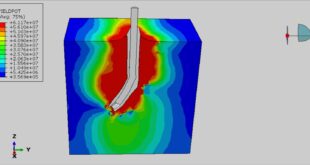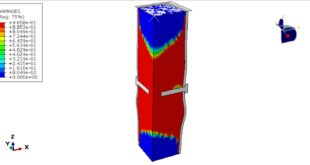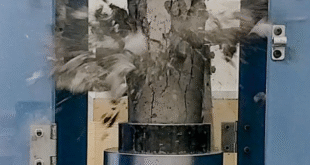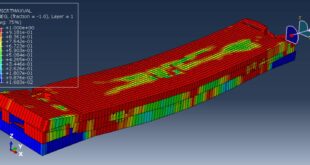In this tutorial, Simulation infill masonry wall in two steel column under vertical and transverse load in Abaqus has been studied. Masonry structures are among the most common types of buildings, being economical and easily made. The possibility of using conventional materials, the easy method of construction and the lower level of construction expertise needed are characteristics of masonry structures. However, they are brittle structures because of the fragile nature of the materials and elements used in their construction. Numerous masonry structures are found across famous city centres, rural regions and mountainous parts of different countries such as the southern USA, Iran, Europe, the Middle East, Australia, and New Zealand. The brick is modeled as a three-dimensional part, concrete beam as a three-dimensional solid part and steel columns as a three-dimensional shell part. You can see a figure of the assembled parts at below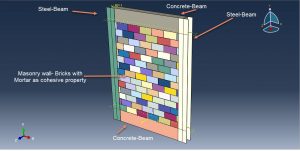
In this micro modeling is used to simulate the interaction between bricks and define the mortar among them. The Concrete damage plasticity for bricks, the elastic model for concrete beam and the elastic-plastic behavior for steel column is used as a material model definition. The dynamic explicit step is appropriate for this type of analysis. The mortar is used as interaction behavior by using the friction coefficient, hard contact as normal behavior, cohesive specification as three stiffness factor and damage with evolution. In this way, Abaqus can consider the mortar among the bricks as a cohesive surface interaction. The fixed boundary condition is assigned to the bottom surfaces of the wall and columns. The pressure load is applied to the upper concrete beam and the transvers concentrated load is applied to the steel column. The big size mesh is used because of the large time which this simulation needs to be complete
The results show that the steel column has a good effect to avoid Rocking phenomenon in the masonry wall. The maximum stress happened at the bottom of the steel columns and the transverse couldn’t make the separation in the bricks row. You can see some figures for the results below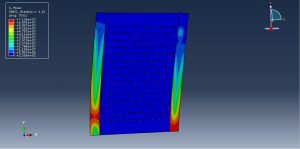
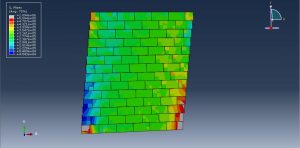
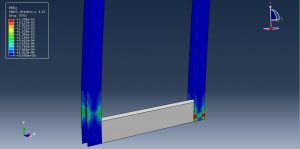
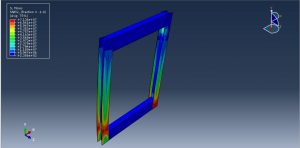
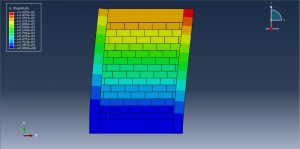
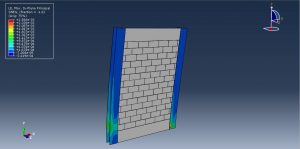
You can provide CAE ,INP,and English video files of this simulation here. The cost of these files is Twenty-Six Euros. you can click on the bellow bottom to beginning process
You can purchase the tutorial through a PayPal account, a Visa, or a Master card, just before payment,send me an email to this address: karampourp@gmail.com
 Abaqus tutorials Abaqus tutorials
Abaqus tutorials Abaqus tutorials
